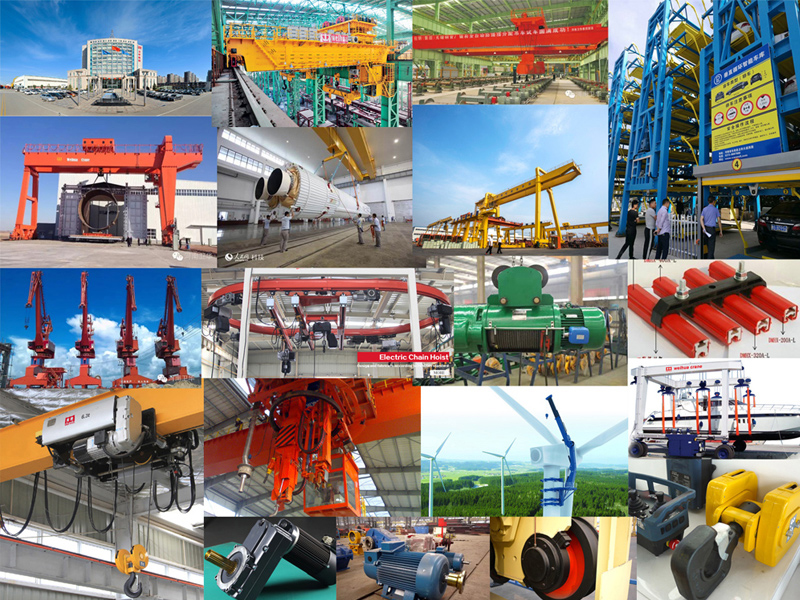Within the bustling ecosystem of a modern warehouse, overhead cranes are the workhorses, silently and efficiently moving materials that keep operations flowing. Yet, the unsung hero at the very end of the lifting chain is often overlooked: the crane hook. Selecting and maintaining the correct hook based on precise warehouse crane hook specifications is not merely an operational detail; it’s a fundamental pillar of safety, بهره وری, and regulatory compliance.

الف قلاب is the direct point of contact between the lifting mechanism and the load. Its failure can have catastrophic consequences – dropped loads endanger personnel, damage inventory and infrastructure, cause costly downtime, and lead to severe legal and financial repercussions. Understanding and adhering to specifications ensures:
1. امنیت: Prevents catastrophic hook failure under load.
2. قابلیت اطمینان: Ensures consistent performance and longevity.
3. رعایت: Meets OSHA, ANSI/ASME B30.10 (قلاب), CMAA, and other relevant standards.
4. کارایی: Matches the hook to the crane’s capacity and typical loads, optimizing workflow.
5. سازگاری: Ensures proper fitment with the crane’s hoist block, rigging hardware (قلاده, زنجیر), and below-the-hook devices (spreaders, magnets, grabs).

When selecting or inspecting a hook for a warehouse crane, these are the critical specifications to consider:
1. رتبه بندی بار (SWL – Safe Working Load or WLL – Working Load Limit):
2. نوع قلاب & طراحی:
3. مادی & Manufacturing Standard:
4. Safety Latch Requirements:
5. بازرسی & Maintenance Markings:

1. Start with Crane Capacity: Know the crane’s rated capacity at the hook point.
2. Analyze Typical Loads: Consider weight, ابعاد, center of gravity, and lifting attachments used (sling types, below-the-hook devices). What throat opening is needed? Is a ramshorn hook beneficial?
3. Determine Required SWL: Select a hook with an SWL meeting or exceeding the crane’s capacity, considering any potential derating factors relevant to your lifts.
4. Specify Hook Type: Eye, کلویس, or ramshorn? Ensure compatibility with your hoist block or lifting mechanism.
5. Mandate Safety Latch: Require a functional, self-closing safety latch unless a specific, documented exception exists (rare in warehouse settings).
6. Demand Certified Quality: Source hooks from reputable manufacturers adhering to recognized standards (ASME B30.10, ASTM A952, CMAA specs). Ensure full traceability and certification documentation.
7. Prioritize Inspection: Establish a rigorous, documented inspection schedule (daily/pre-shift visual checks by operators, periodic detailed inspections by qualified personnel) based on usage and severity of service. Replace hooks that exceed wear limits or show any signs of damage.

Warehouse crane hook specifications are far more than just numbers on a drawing. They represent the critical engineering parameters that safeguard lives, protect assets, and ensure smooth operations. Ignoring these specifications is an unacceptable risk. By thoroughly understanding load ratings, hook types, material standards, latch requirements, and inspection criteria, warehouse managers and safety professionals can make informed decisions, procure the correct components, and implement robust maintenance programs. Treating the humble hook with the respect its specifications demand is fundamental to building a safe, efficient, and reliable warehouse lifting operation. Never compromise on the integrity of the final link in your lifting chain.
ما برای بازخورد شما ارزش قائل هستیم! لطفاً فرم زیر را تکمیل کنید تا بتوانیم خدمات خود را متناسب با نیازهای خاص شما تنظیم کنیم.


برای به دست آوردن اطلاعات محصول و نقل قول های موجود در WhatsApp روی دکمه کلیک کنید.
نقل قول
آخرین نظرات